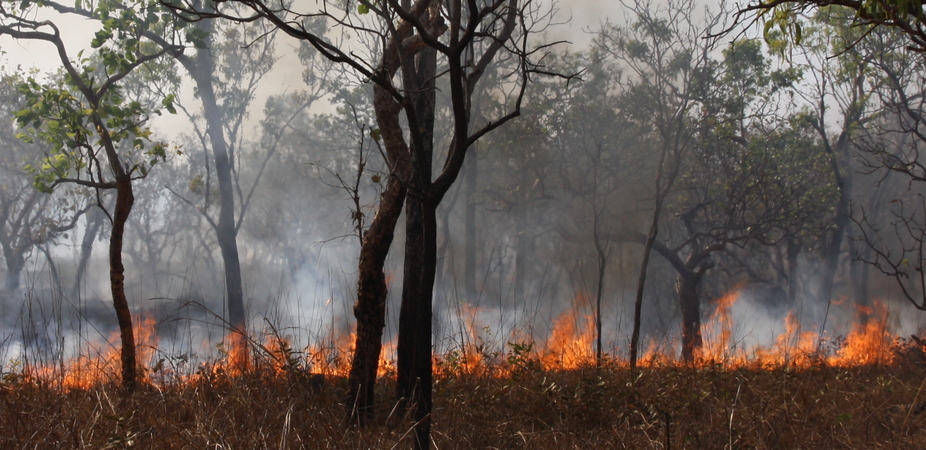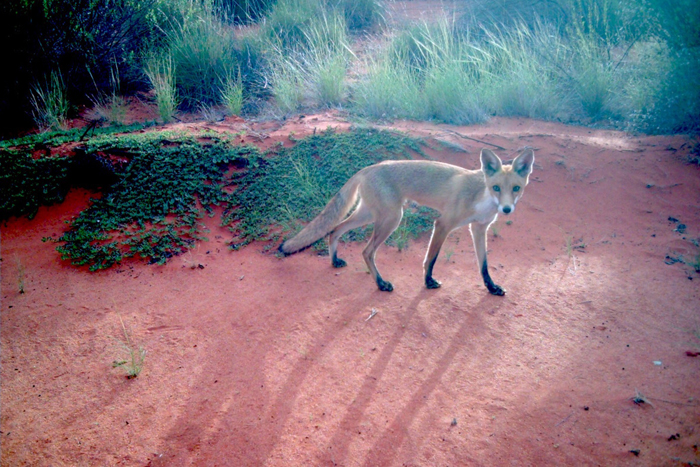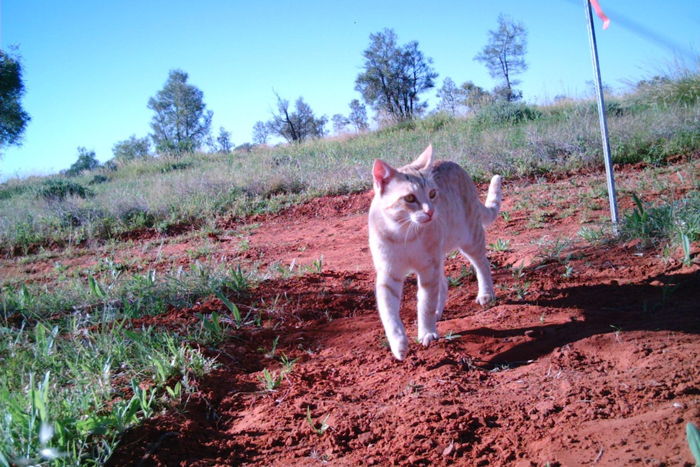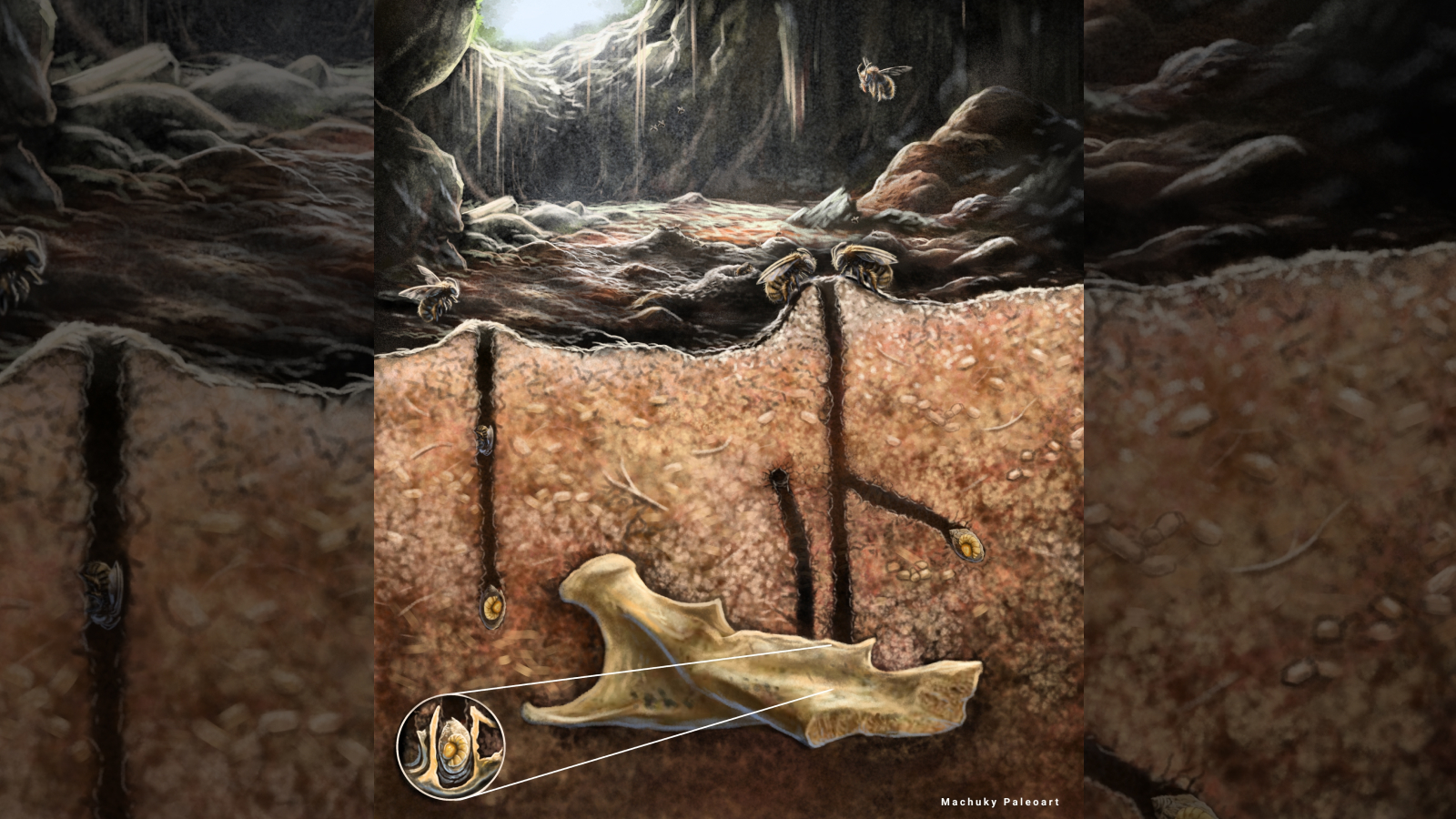Bushfires Give Predators the Advantage


This article was originally published on The Conversation. The publication contributed this article to Live Science's Expert Voices: Op-Ed & Insights.
Bushfires are a part of life in Australia, and when they have run their course we pick up where we left off and carry on. But if you happen to be a small animal, surviving the bushfire is only the start of your worries.
Research now suggests that survival in recently-burnt areas is not a level playing field.
Higher chances of predation are putting our native fauna at risk.
Bottom-up and top-down effects
The effects of bushfires are felt on a large scale throughout the landscape. Big fires burn away vegetation and other ground cover, drastically simplifying and altering the structure of the habitat.
This simplification, in turn, affects the distribution and abundance of animals which rely on vegetation for food and shelter.
This process begins with bottom-up control of the ecosystem, where the fire-effect is exerted at the level of the primary producers – the vegetation – and flows upward from there.
Get the world’s most fascinating discoveries delivered straight to your inbox.
Predators are also recognised as major shapers of ecosystems. Their influence is via top-down regulation, which means that they exert their impacts at higher levels in the food chain and the effects trickle down.
These effects and their consequences are best grasped by looking at a simplified food chain containing three distinct feeding positions (trophic levels): primary producers or vegetation (green), herbivores (yellow) and carnivores (red).
Each level relies on the level below for food. Under normal circumstances, the bottom levels contain more biomass than the top levels which is depicted by the size of the box.
Fire reduces vegetation biomass which impacts higher trophic levels from the bottom up. In contrast, an increase of predators affect lower levels from the top down. When both occur simultaneously the trophic levels in the middle get heavily impacted.
Predators introduced outside their native range, such as feral species, can have particularly strong effects on native species. Indeed, the deleterious impact of feral predators in Australia, specifically of cats and red foxes, has been well documented.
From predator or fire to predator and fire
Both bushfires and predators are subject to intense management by humans. We traditionally manage both forces individually, using separate plans of management such as trapping and baiting for predators and back-burning regimes for fire.
Therein lies the crux of the problem: the reality is that they are not independent ecosystem drivers and managing them as such is not appropriate.
Fire interacts directly with predators and, in turn, predators adjust their behaviour after fire. This means much of our native fauna is threatened by the simultaneous bottom-up and top-down effects of both fire and predation.
A study done from the stony gibber plains in far-western Queensland provides a good example of this interaction.
Populations of small native mammals such as the spinifex hopping mouse (Notomys alexis) and the long-haired rat (Rattus villosissimus) seemed quite resilient to bushfires that burnt much of the area, remaining abundant immediately after the fire. But eventually, populations declined regardless.
The decline was attributed to the onset of top-down control by abundant predators, particularly cats and foxes, in the area coupled with the bottom-up control of diminished availability of food resources due to fire.
It appears that reduction in the structural complexity of vegetation and increased openness due to fire increases the exposure of small animals to predators, making them easier to detect and capture.
What about the ferals?
In one study, scientists from Deakin University investigated the interactions between different fire regimes and fox distribution.
The authors warned that foxes appear to be extreme habitat generalists, able to endure just as well in recently burnt areas as in unburnt ones. This poses a very real threat to Australia’s native fauna in burnt vegetation where the fire has already reduced cover and food resources.
The impact of cats is not much better. Other research published shows that feral cats actively select hunting grounds in recent fire scars. Interestingly they only do this when the fire has been particularly intense, leaving no pockets of unburnt vegetation behind for native animals to hide in.
To make matters worse, cats specifically select the burnt areas where small mammals, their preferred prey, are highly abundant. These are the areas that are of particular concern for conservation and where predators can do much damage, causing healthy mammal populations to decline rapidly.
Management strategy
It’s clear we have a problem, but it’s not all doom and gloom. There are ways to mitigate the interactive impacts of fire and predators.
Firstly, we need to reduce the frequency of broad-scale, high intensity bushfire events. Fires that burn at a lower intensity usually leave patches of vegetation unburnt. These patches can act as refuges for surviving wildlife.
Mild fires are also often stopped by riparian and alluvial strips, which are again important refuge areas for a lot of small mammals post-fire. These refuges may hold the key to recovery of small animal populations, especially in places where the density of native fauna is high.
Secondly, we know that predation often intensifies in the wake of a bushfire so this should act as a trigger for intensive control of cats and foxes.
Only by considering both of these actions can we plan to give our natural wildlife a chance to survive both the bushfires and the attacks from predators that bushfires can attract.
Eveline Rijksen, University of Sydney and Chris Dickman, University of Sydney contributed this article to The Conversation.
This article was originally published on The Conversation. Read the original article. Follow all of the Expert Voices issues and debates — and become part of the discussion — on Facebook, Twitter and Google +. The views expressed are those of the author and do not necessarily reflect the views of the publisher. This version of the article was originally published on Live Science.





